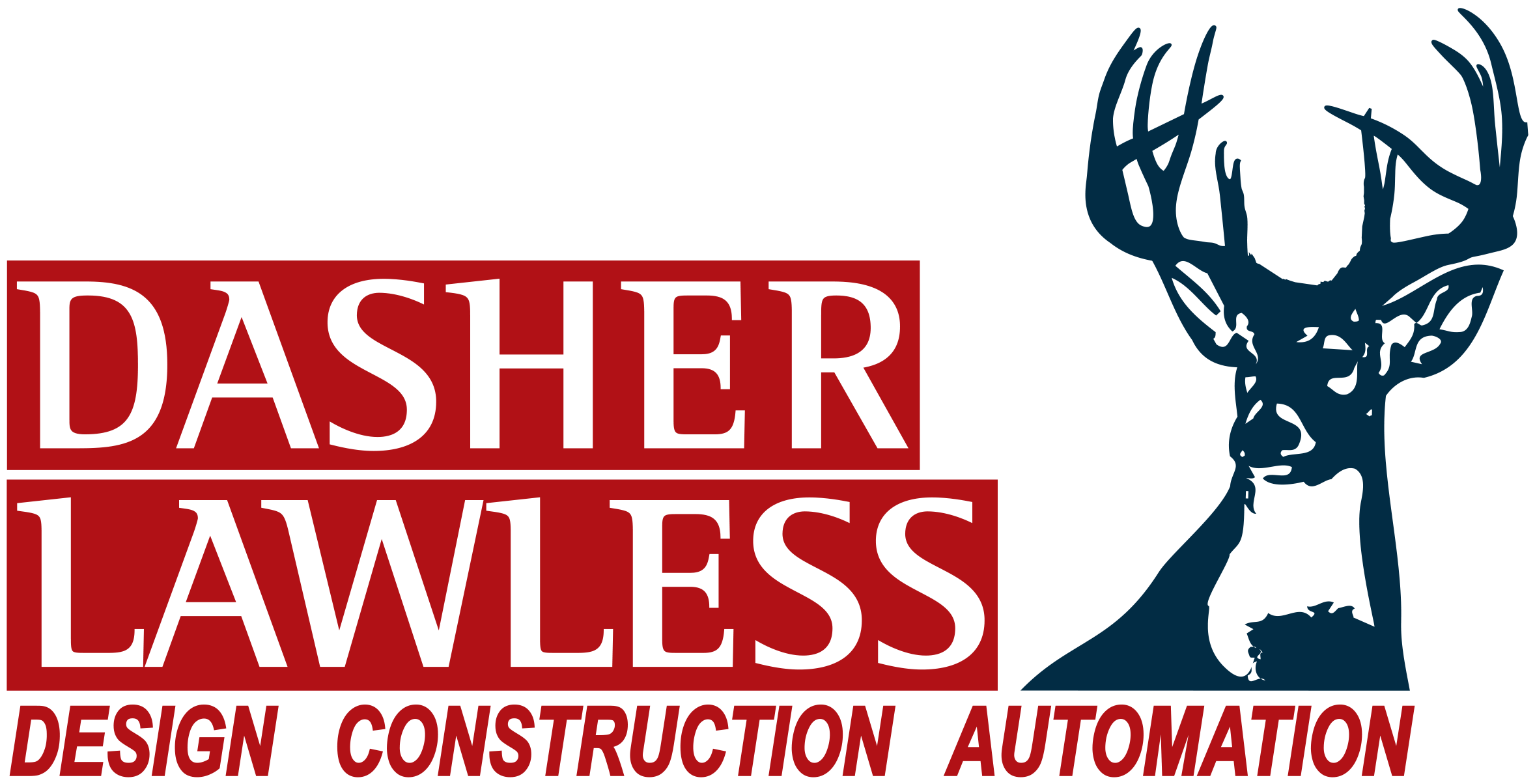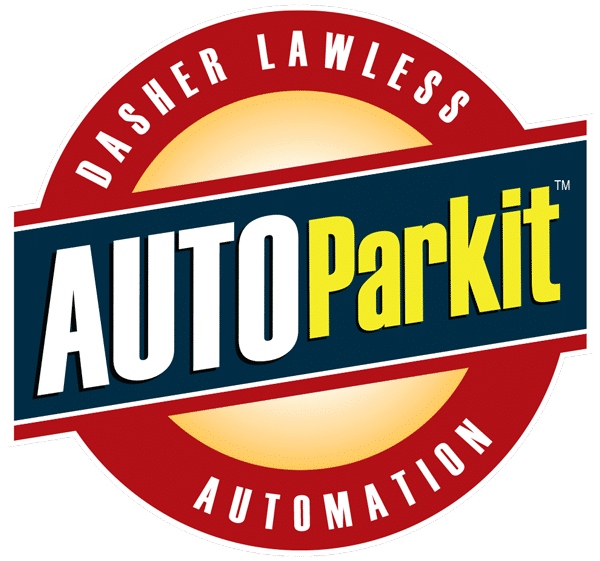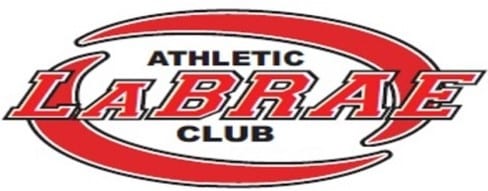FAQs
This area is designed to answer some of the most common questions we receive about our automation products.
System Basic
What does “intelligent” parking mean?
Parking that integrates with the overall design concepts, removes barriers of cost & time for the developers and at the same time interacts with customers’ needs, behaviors, trends using proven off-the-shelf-technology to provide a fully automated valet service that is affordable to operate and maintain.
What is the time it takes to retrieve a parked car?
From the time the system is instructed to retrieve a car it will take on average 40-180 seconds. Note: several factors play into that calculation such as size of storage facility, location of car within the storage facility, and number of cars in the retrieval queue at the time of request.
What are the fundamental system goals of the AUTOParkit™?
There were 6 basic goals that the system had to accomplish:
- Cost Effective: The AUTOParkit™ would be approximately the same cost as a traditional above grade parking structure.
- Seamlessly Simple: The AUTOParkit™ would be comprised of basic mechanical equipment that required no special training to maintain or repair; with no proprietary electrical components nor custom software.
- User-Friendly: The AUTOParkit™ would be easy to use by all consumers and adaptable for different types of users—residential, commercial, and special events, etc.
- Reliable: The AUTOParkit™ would strive to maintain a 100% operational time with quick, on-site plug-and-play components for easy maintenance and repair.
- Secure: The AUTOParkit™ Load Bays would provide safe and secure environment for customers.
“A study conducted by the United States Department of Justice found that one out of every twelve rapes occurs in a parking garage. When one looks at sexual assaults by strangers, over 40 % occur in garages.”
Data from National Parking Association PARKING March 2009
- Sustainable: The AUTOParkit™ shall reduce emissions by 80% and fuel usage by 80%.Automated parking is inherently sustainable. As compared to traditional parking structures it is projected to “reduced volatile organic compounds by 68%, carbon monoxide by 77%, nitrogen oxides by 81% and carbon dioxide by 83%. Fuel Savings also average 83%.”
Data from National Parking Association PARKING March 2009
What happens if the system loses power?
Should AUTOParkit™ lose primary power all cars remain intact and safely stored. AUTOParkit™ shall hold the system in a “safe-state”. The information on where the cars are stored is kept in non-volatile memory and has an on-site backup also in non-volatile memory. AUTOParkit™, depending upon the size, can be built to accommodate an on-site generator to provide necessary secondary power until primary power has been restored. A second option is to provide a portable generator hook-up to the switch gear.
What makes the system robust?
AUTOParkit™ leveraged time tested industrial automated vehicle storage and retrieval systems technologies. It then adapted them for a commercial application. The focus was to build on the robust and flawless requirements of the automotive industry and bridge the gap to a commercial application by integrating Dasher Lawless’s development and design expertise to create a seamless, multi-functional interface for the average user. Dasher Lawless’s knowledge of site design, vehicle cueing, peak traffic demands, and mixed-use developments provides the insight to build AUTOParkit with the capability and flexibility to design Load Bays and vehicle access to meet a project’s peak hour demand.
What is AUTOParkit™?
AUTOParkit™ is a fully Automated Parking System (APS), a collection of building infrastructure, mechanical, electrical, controls and software components that comprise an automated parking structure; designed, installed, and commissioned by Dasher Lawless. It is a modular system that can be customized for each installation base on site specific information. The major subsystems are:
- Stall – Enumerated, fixed, single, storage location.
- Key FOB – A site specific Radio Frequency Identification (RFID) that contains the identification of the user and their associated vehicle(s). It is used for user authentication.
- Lift – Horizontal movement between storage levels.
- Load Bay – Safe and secure location where the car is either (1) delivered by a user to the system for storage [nose in] or (2) delivered by the system to a user for retrieval [nose out]. While anyone or animal or non-automobile object is located in the Load Bay the system remains halted.
- Pallet – Carrier of the automobile or storage contents that has a fixed width, length and storage capacity.
- Rack – The structural frame work of stall locations. These stalls can be at, below or above grade level. This becomes the storage facility.
- Lobby – A safe and secure location that a user occupies that contains Retrieve Kiosk(s), Pay Station(s), and a Queue Monitor(s). The Lobby may have with visibility of Load Bay(s). A Queue Monitor informs the user of the status of their retrieve request and directs them to the proper Load Bay. A Retrieve Kiosk is the system equipment provided for the user to initiate retrieval requests. Pay Stations allow for POS transactions and will automatically request a vehicle once payment has been completed.
- Shuttle – vertical movement between Stalls on the same level.
- Park Kiosk – Location of the system where a user interacts with the system to request to park their automobile that conforms to the system load requirements in height, length, width, weight. The automobile cannot have anything in tow or attached on the roof (e.g. boat). If an automobile does not meet these standards the automobile is rejected, and the user is instructed to remove the automobile from the Load Bay.
What makes an AUTOParkit™ reliable?
AUTOParkit™ leveraged time tested industrial automated vehicle storage and retrieval systems technologies. It then adapted them for a commercial application. The focus was to build on the robust and flawless requirements of the automotive industry and bridge the gap to a commercial application by integrating AUTOParkit’s development and design expertise to create a seamless, multi-functional interface for the average user. Dasher Lawless’s knowledge of site design, vehicle cueing, peak traffic demands, and mixed-use developments provides the insight to build a system with the capability and flexibility to design loading bays and vehicle access to meet specific development and project demand.
How does the cost compare to traditional parking?
Each parking space in the AUTOParkit™ (API) is approximately equal to traditional costs associated to an above grade parking structure. However, since it is parked volumetrically, it normally doubles the number of cars parked within the same volume of space. Furthermore, it has significant impact when parking is below grade since the density per level increases and the floor-to-floor heights are lower. The diagram below shows the same number of stalls.
What is the common and fundamental problem that urban planners and developer both face in southern california?
The focus of municipalities is to limit suburban sprawl and to prioritize smart urban in-fill redevelopment projects. The design, building, and development communities are being forced to look for an alternative way to develop these projects. The challenges of developing in Southern California are many, but the one constant is the challenge of providing adequate parking. The limitations inherent with traditional parking structures often times result in (1) extremely inefficient parking structures with excessively high costs of construction, and (2) little return. In many Southern California communities, the issue of parking is compounded by the lack of connectivity of public transportation. Californian’s love of their cars up in to the point that they have to park their car.
Owner
Is an AUTOParkit™ only for new construction?
No. AUTOParkit™ can be installed on an existing site during renovation as well as new construction. Since the structure is from steel it has multiple configurations it that allow for mixing of above and below grade parking. Ingress and Egress which is also sometimes problematic is greatly reduced since there are no turn lanes, cars can move at 90° angles. AUTOParkit™ eliminates passenger elevators, walk-ways, passenger stairwells so the space available for parking is highly utilized by cars.
What is the maximum size the system can be? What is the minimum size?
The minimum system is 16 cells. The maximum size is 1,000,000.
What about meeting ada requirements?
Since the loading bay is universal and handicap accessible every storage cell is available for handicap parking.
What can developers expect from an AUTOParkit™?
The developer has some significant building infrastructure cost savings
- No Mechanical Ventilation: Vehicles are transported without the engines running. Automated parking facilities do not require mechanical ventilation of vehicle emissions.
- No HVAC: The AUTOParkit™ storage facility does not need to be heated, ventilated or air-conditioned.
- Reduced Lighting: Since the interior of the storage facility is not accessible, only maintenance lighting is required. Utility costs for lighting and HVAC are greatly reduced.
- Reduced Space Width: Vehicles are stored by machines with precise control of the vehicle movement. The automated parking facilities utilize narrower stalls than self-park facilities. Additional stall width is not required for door opening clearances or for maneuverability into the stall.
- Lower Ceiling Height: Because pedestrians do not circulate inside the storage facility, the ceiling height may be much lower. Approximately three automated parking floors can be provided for every two floors of a self-park garage where floor to floor heights are typically on the order of ten feet or more.
- No Stairs or Elevators: The vehicle storage compartment is not accessible to the public. No stairs or passenger elevators are required. Only ladders and catwalks are required for access inside the storage vault.
- Custom Fit: AUTOParkit™ allows for a developer to choose from fully automated or semi-valet systems tailor-made to meet end users requirements. Load Bays for example can be drop-off/pick-up or drop-off-only or pick-up-only or configurable. This allows a Load Bay to adjust for peak hour demands.
What stops a development from proceeding?
Although several things can derail a project (funding, municipal approval, community acceptance, etc.) but the most common is the inability to park the facility. “If you cannot park it, you cannot build it.”
What is the total retrieval time (TrT)?
Total Retrieval Time (TrT) is the summation of time required by a customer, starting as they enter a parking facility, locate their car and leave the parking facility. When we add paid parking this would also include the POS time to receive their paid voucher that they normally use to actually exit the parking garage with their vehicle.
With AUTOParkit™ the car comes to the owner and eliminates the owner going to the car. In the case of paid parking the vehicle can be summoned immediately after the POS has been completed. This instantaneous processing allows for a reduction in the TrT for an AUTOParkit™.
AUTOParkit™ allows for Key Fob readers or bar code scanners to be located near elevators or pedestrian passage ways that allow the user to request their car before arriving at the parking structure. This can also be done with a mobile app. Any of these allow AUTOParkit™ to begin the transport of the owner’s automobile to the Load Bay while the owner is still in route to the Lobby. This can dramatically reduce the TrT to mere seconds.
Are there any tax advantages with AUTOParkit™?
75% of the AUTOParkit™ is capital equipment investment so it qualifies for an accelerated tax depreciation schedule of just seven years, far faster than the typical amortization for a conventional parking facility.
What are the benefits of AUTOParkit™ to an owner/operator?
The owner/operator has several distinct advantages over traditional methods:
- Maximizes Real Estate Usage: Increased capacity (double the number of cars in the same space) OR Spatially efficient (same amount of cars in half the space).
- Financial Multiplier: Increased revenue capacity of parking facilities. Increased hourly / daily / monthly rate per space. More land available to build. Potential tax incentives.
- Cost Effective: Does not require manual labor. Lower insurance rates along with operating and maintenance costs. AUTOParkit System does not require ramps, concrete, ventilation equipment, elevators, numerous entry and exit points, cashiers, or valets. All of these increase operating costs.
- Maintenance Friendly: proven technology alongside electro-mechanical equipment means maintenance costs compare favorably to all other design alternatives.
- Customizable: Each facility is designed to meet individual owner’s needs.
- Modular: Facility can easily expand to meet increased demand.
- Flexible: May be installed underground, on rooftops, above ground, within existing structures and alongside buildings.
- Portability: This is a highly flexible land use tool for property owners and developers. AUTOParkit can be installed, used for five to seven years, then dismantled and relocated to another site depending on the need or values of the land area that is currently being used; and especially if the land is destined for future developments.
- Ample Parking Spaces: Where demand is high, more parking spaces translate into happy, repeat customers.
Does AUTOParkit™ provide for a maintenance and monitoring service contract?
Yes. Every AUTOParkit™ requires (1) continuous monitoring which is set forth in the Monitoring Service Plan (MSP) and (2) routine maintenance defined in the Maintenance Service Agreements (MSA). A multi-tiered MSA allows the owner to select the proper amount of support for the required routine maintenance of their AUTOParkit™.
How does the ongoing operational and maintenance cost compare to that of traditional parking structure?
The operational and maintenance (O&M) cost will be approximately 40% less than a traditional parking garage due reduced wear and tear on the building and infrastructure. Building maintenance is dramatically reduced since cars do not run into or scrape columns or walls. There are neither public stairwells to clean nor passenger elevators to maintain. Only emergency or maintenance lighting has to be replaced. There are no fans or blowers to circulate air. Parking stalls lines do not need to be painted. The vast majority of the facility is not publicly accessible.
The equipment maintenance cost is proportional to the size of each AUTOParkit™ and based on a multi-tiered Maintenance Service Agreement (MSA) which is required for each AUTOParkit™. AUTOParkit™ maintenance is based on usage and not time. Data is continuously collected for each subsystem and maintenance reports, based on this data, are generated for individual assets. This methodology pinpoints maintenance tasks and avoids unnecessary activities.
Municipality
How is an AUTOParkit™ safe?
Safety is a key factor in the design of AUTOParkit™ with a foremost focus on people safety as well as property and environmental safety. AUTOParkit™ provides redundant protection for all users and maintenance personnel. The safety features are designed and implemented in a manner that allows the parking system to operate efficiently and reliably with clever use of light curtains, interlock switches (for doors), safety relays, safety modules, programmable safety controllers, and other safety devices to monitor, prevent, and react to potential hazards, missteps, or ignorance. This technology has been adopted from industrial safety standards and applied to AUTOParkit™ to the fullest extent possible.
People Safety:
The Load Bay is the only area within the system where the user interacts with AUTOParkit™. Therefore, a number of safety devices are implemented to ensure the safety of the user when they are parking/retrieving their vehicle. The fundamental design insures that while the Load Bay is occupied the system does not move and waits for the Load Bay to be clear of people, pets or other content (luggage, groceries, shopping bags, sports equipment, etc.). To ensure this safety the latest technology has been employed to its fullest capacity.
- A Safety Network is used to connect critical safety devices to a Safety Controller that complies with the industries’ highest machine/equipment safety standards.
- Motion Sensors are installed at key locations within the Loading Bay to make sure that there are no moving objects or people prior to operation.
- All access doors will be equipped with safety door interlock switches. All access doors to the Loading Bay must be closed and locked prior to operation.
- Signs posted at various locations within the Loading Bay and on the Electronic message board will caution and remind users to follow all safety rules and procedures.
Areas outside of the Load Bay:
- All maintenance doors and entry locations are monitored with safety interlock switches to make sure all doors and entry ways are closed and secured before the parking system can be operated.
- Motion sensors will be located at various locations within the parking system (in the parking cells) to make sure no moving objects, people, or animals are detected. If any movement is detected, the system will be stopped.
Property Safety:
In addition to the safety of the user, safety of the property and of the parking system was also considered during the design phase.
- Safety Light curtains are used in the Loading Bay to make sure the vehicle is within the safe envelope (space) prior to activating the Parking System. If any part of the vehicle is protruding outside of the safe envelope boundary, the user will be requested to re-position the vehicle.
- Area Sensors (6 beam sensors arrays) will be used on both sides of the Shuttle pathway to make sure the path is clear before the Shuttle moves.
- Visual Alarms will be used to indicate a moving Shuttle or Lift. Audible Alarm will also be used in Maintenance Mode only.
- Locking pins will be used on the Lift at each floor to mechanically secure the Lift when transferring a vehicle on and off the Lift.
- Locking pins will be used to secure the Lift for maintenance access below the Lift.
- Lock-out Tag-out will be applied to all control panels and disconnect switches.
Fire Safety:
- In a fire emergency, the Lift will be moved all the way down to lowest level and the Shuttle will be moved all the way to the far end of the Shuttle way.
- The Lift, Shuttle, and all moving devices within the Parking System will be completely controlled to a safe state.
- Officials are automatically notified when fire has been detected.
What are the benefits of AUTOParkit™ to a municipality?
- Reduced Traffic: Researchers at the Department of Transportation have concluded that over 50 % of the traffic in a typical downtown is simply on the road circling the block and searching for vacant convenient parking spaces.
- Increased Supply of Parking Spaces: AUTOParkit™ can be easily implemented in many dense locations where a conventional garage cannot fit.+
- Improved Image: Convenient and affordable parking is favored by non-residents.
- Reduced Crime: By denying access to vehicles, the technology dramatically reduces the opportunity for crime.
- Facade Design: Because the vehicles are turned off there is no need to exhaust CO2 and other emissions from the garage. This allows architects and planners to design garages that can fit into any context.
What are the environmental impacts to using an AUTOParkit™?
- Elimination of Toxic Emissions: Based on EPA data, it was found, that this technology, implemented for a 500 car garage on a yearly basis would:
a. Save over 6,000 gallons of gasoline per year.
b. Eliminate 1,000 pounds of Hydrocarbons.
c. Eliminate 3.5 tons of Carbon Monoxide.
d. Eliminate 500 pounds of Nitrogen Oxides.
e. Eliminate over 60 tons of Carbon Dioxide. - Decreased search time for parking: By minimizing the search for parking, AUTOParkit™ helps to reduce city center congestion, air pollution and fuel consumption.
- Attention to the environment in its design: Starting by eliminating poisonous exhaust fumes from the system. Drivers switch off their engines when they arrive at the entrance, apply their coded swipe cards and clean, electrical energy proceeds to store the car safely. Noise pollution has also been carefully considered and the implementation of quiet electric motors makes this the perfect complement to any area. Patrons don’t have to worry about vehicle fluids such as motor oil and water dripping onto their cars as all fluids are absorbed by specially designed drip trays.
Municipalities continue to mandate that new projects meet higher levels of sustainability through leed certification. How does an AUTOParkit™ system contribute to leed certification?
AUTOParkit™ provides a “Green” parking solution to address the increasing demand for environmentally conscious developments. The AUTOParkit™ parking system offers various environmental frameworks that provide an opportunity for the following LEED solutions:
- Reduced CO2 and other vehicle emissions – cars are stored and retrieved while not running
- Reduced mechanical requirements – twice as many cars in the same footprint
- Reduced energy consumption – the storage facility does not require conditioned space
- Reduced lighting requirements – only emergency or maintenance lighting is required.
- Water conservation – there is no building requirement
- Saves parking search time – users are not wasting time finding a parking spot
- Reduced excavation requirements – same number of cars in half the space reduces excavation
- Reduced overhead and operating costs – staff, utilities are all reduced or eliminated
- Reduced maintenance costs – No one is in the storage facility so only the loading bays are subject to public wear and tear.
- Reduced parking structure footprint – Same number of cars in half the footprint
The U. S. Green Building Council is gaining support for its LEED Green Building Rating System. The GSA has mandated that its new buildings meet a minimum LEED certification of Silver. In order to achieve certification a new project must receive a minimum of 33 LEED points on a scale of a possible 69 points. Many states, counties and cities are following the direction of the federal government. A review of LEED-NC Version 2.2, the Green Building Rating System for New Construction & Major Renovations, indicates that an automated parking system could receive a minimum of 10 points and a maximum of 17 points.
Other areas that contribute one point are:
- Lighting
- Thermal comfort
- Chemical and pollutant
- Low emitting materials
- Air quality
- No Ventilation of emissions (vehicles are not running inside the garage)
- Optimal energy performance
- Atmosphere
- Light reduction
- Maximize open space
- Preferred 5% parking (Car Pool)
- Shared vehicle storage
User
Is it reliable?
AUTOParkit™ is designed and built from all industrial controls for 99.99% operation. Each AUTOParkit™ is monitored 24/7 to insure it remains fully operational.
What if i only want to receive something from my car?
Request your car. After it is delivered to the Load Bay, retrieve your belongings and simply press the “REPARK” button on the touch screen, then leave the Load Bay. AUTOParkit™ will repark your vehicle.
What happens if i lose my claim ticket?
AUTOParkit™ requests a cell phone number when the vehicle was originally dropped off. This is used as a backup identification method. The ticket number can be sent in a text message. If the user chooses not to provide a cell phone number, they can call the 24-hour support number and the support team will manually locate their vehicle.
What if I own an electric car. Can it be charged?
AUTOParkit™ offers as an option automated EV Charging Stalls. If the site, choose this option then the answer is “Yes”. After a user stops their car in the Load Bay they are able to plug their vehicle into the an EV Pallet. When the EV Pallet is stored into a EV Stall power is connected automatically.
Is my car safe?
Yes. Your car rests on a pallet. The pallet carrying your vehicle is then moved vertically/horizontally to its destination. No one touches, enters, or opens your car at any time. No one has access to the Rack Storage area thus eliminating theft and vandalism to your car.
Is there a mobile app?
Yes. This Mobile App will allow you to request entry, park your vehicle and request your vehicle’s return. It will also have the ability for you to pay for your parking.
What is the cost to park?
Parking rates are set by the owner and are site specific. Please check the posted parking rates.
How does the AUTOParkit™ work?
AUTOParkit™ is surprisingly simple. You enter an AUTOParkit through a traditional garage door to enter the Load Bay. The Load Bay is 1 ½ Stall Garage. Then you turn off your car, walk a few short steps to a touch screen and follow directions. First you will be instructed to identify yourself by tapping the Key FOB reader or scanning your ticket’s bar code. Next you will need to answer 5 short questions and then leave. Once you have left the Load Bay your car is safely whisked away by an industrial proven, commercially adapted high tech system. Once parked, your car stays secure in the rack structure.
Retrieval is just as easy. A tap of the Key FOB or scan of your ticket’s bar code at a Retrieve Kiosk and moments later the car is delivered to a Load Bay nose out ready to drive away. AUTOParkit™ provides a Queue Monitor in the Lobby Area to let user know the status of their vehicle’s delivery and the location of the Load Bay.
The dreaded process of slowly driving on endless ramps, hunting for a space, climbing stairs or crowding into elevators burdened with belongings at all hours of the day (and night) is a thing of the past, thanks to AUTOParkit™.
Can I park overnight?
Every installation sets its own site rules. These are normally posted in or near the Load Bays.
What are the benefits of AUTOParkit™ to a user?
The user experiences:
- Premium Valet Service: Better service than a conventional valet service. With a conventional valet service a driver parks and retrieves the car on the ground floor and takes on owners keys. With an AUTOParkit no one ever drives or even touches the car. The keys remain with the owner at all times.
- Convenient: All ground level access. Saves time. No need to drive around looking for an open space. No walking around parking decks. No stairs or elevators. No searching for the vehicle because a user forgot the location of their car.
- Improved Safety & Security: Ground floor access only. Safe and well-lit terminal. No personnel inside the parking garage. Fully enclosed structure with centralized drop-off and pick-up areas.
- Vehicle Protection: Because customers do not drive vehicles inside the storage area, there is no risk of vehicle collisions or property damage from errant drivers.|
- Reduced Fuel Consumption: Less time spent driving around in search of parking.
- Time Saver: AUTOParkit eliminates a customer’s time wasted looking for an empty car parking space. The average time to retrieve a car is between 40 and 180 seconds based on a 100 cell system.
- Customer Friendly: Vehicle access is at ground level eliminating the use of stairs, elevators and escalators. Given that the entry/exit points can be designed to allow access for the disabled, every space effectively becomes a wheelchair friendly solution.
- Safe & Secure: Drivers have no need to enter the garage; therefore, opportunities for serious and petty crime are reduced. Safety devices ensure that all vehicles are accurately transferred between stalls smoothly and safely. Vehicles can only be retrieved by those with the appropriate authorization minimizing the possibility of car theft.
Will my car use the same Load Bay when it is returned?
The general answer is yes. However, especially when multiple Load Bays are employed your car could be delivered to any number of Load Bays based on current Load Bay occupancy. Therefore, it is always best to check the Queue Monitor in the Lobby Area for the proper Load Bay.
Is it safe?
The user drives into an empty secure Load Bay. There are security cameras in each Load Bay and it is well lit, conditioned space. The AUTOParkit™ operates a collection of sensors to detect movement, objects, and access. If any of the conditions are not perfect the AUTOParkit™ will not move keeping the user harm free.
When a user request’s their car, only the owner of the vehicle delivered to the Load Bay is able to unlock the Load Bay Door.
Walking alone through a deserted, poorly lit parking garage braving the elements is no longer necessary with AUTOParkit™. The vehicle is brought to the Load Bay while the driver waits in a secure, conditioned, well-lit Lobby area.
What happens if I request my car and I do not arrive on time to the Load Bay?
When your car is requested and delivered to a Load Bay, AUTOParkit™ sets a timer. If you do not claim your car before the timer expires, AUTOParkit™ will treat your request as an Abandoned Request and will simply re-park your car.
Company
During the research what is insufficient with other automated parking systems?
The vast majority of the Automated Parking Systems are:
- Based in Europe and Asia and unfamiliar with North American building codes and requirements.
- Used complex, proprietary technologies that are expensive.
- These systems still required someone else to build a structure to support their custom systems.
- Even after implementation, it still necessitated highly trained maintenance personnel
- Required overseas acquisition or storage of expensive replacement parts not easily accessible.
What was inaugural Automated Parking System (APS) for Los Angeles?
AUTOParkit™ at the Savannahs, a multifamily building located at 14309 Burbank Blvd., Sherman Oaks, CA 91401. It was completed in 2012 and publicly unveiled as the first, fully-Automated Parking System in California on February 21, 2013. By comparison if the Savannahs had been built with traditional parking methods, it would have resulted in only half the number of condominium units. This AUTOParkit System doubled the amount of traditional parking.
The Savannahs’ AUTOParkit™ System is fully automated. There is no on-site operator. From the outside residents of the area would not even suspect that there is an automated parking garage since the façade is the same for the entire building. The inside is a different story. It holds an elegant design leveraged form the automobile industry and adapted for commercial use.
Who created AUTOParkit™?
AUTOParkit™ is the brainchild of Christopher Alan President of Dasher Lawless. His vision was to develop the most cost effective, simple, user friendly, reliable, secure, and sustainable solution for automated parking, self-storage and boat storage.
What is Christopher Alan’s background?
Christopher Alan is a real-estate developer and builder in Los Angeles, California. Christopher has developed urban in-fill, mixed-use, commercial, and residential developments for over ten years through his development, construction and design-build company, Dasher/Lawless Inc. (D/L), and the AUTOParkit™ concept emerged from Christopher’s desire to solve an ingrained and growing urban planning problem of adequate parking.
Couldn’t an automated parking system be purchased?
In 2007 that was the fundamental notion. After an exhaustive global search Christopher Alan and his team could not find a single company that understood the development and building process, nor the complexities involved in integrating an automated parking system into a building development. During the search for an existing solution Christopher Alan and his team could NOT find a company that was able to navigate the approval process required to build an automated parking system in Los Angeles, California.

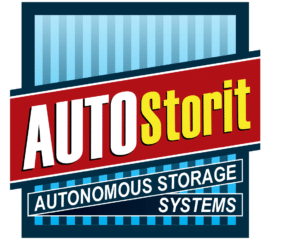
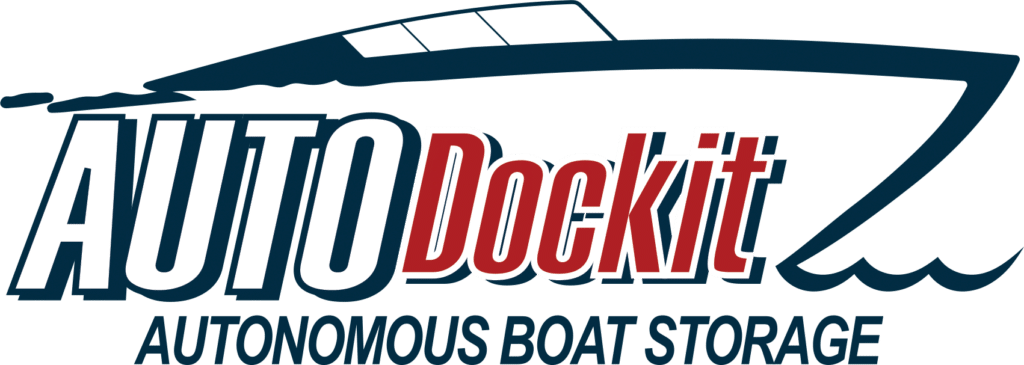
Automated Park Management System (APMS) controls and monitors traditional parking stalls for their authorized usage. The APMS can be fitted to run as a standalone system or be integrated with AUTOParkit™, AUTOStorit™ or AUTODockit™.
Automated Storage and Retrieval System (ASRS) is a specialization of Dasher Lawless for AUTOParkit™, AUTOStorit™ and AUTODockit™. However, if you require an ASRS solution with additional features we are happy to expand our portfolio to accommodate your requirements. Please come talk with us about your project or email us at info@dasherlawess.com.
Our Team always enjoys a good challenge. Between our capable architecture and engineering groups along with our versatile manufacturing division we are more than willing to provide you with a tailored solution. Please come talk with us about your project or email us at info@dasherlawess.com.
